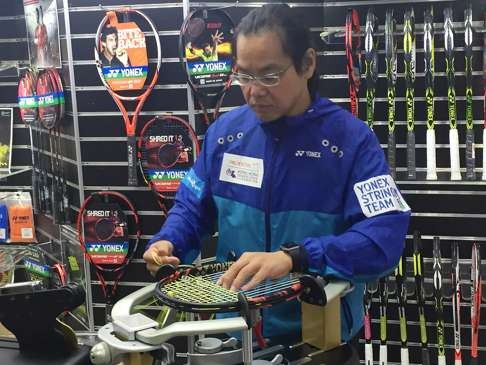
High tension: the 'stringer' charged with keeping pros' racquets in tip-top shape at Hong Kong Tennis Open
Hong Kong-based Dickie Lee has strung racquets for the world’s best players at 23 grand slam events since making his debut at the Hong Kong Champions Challenge in 1999
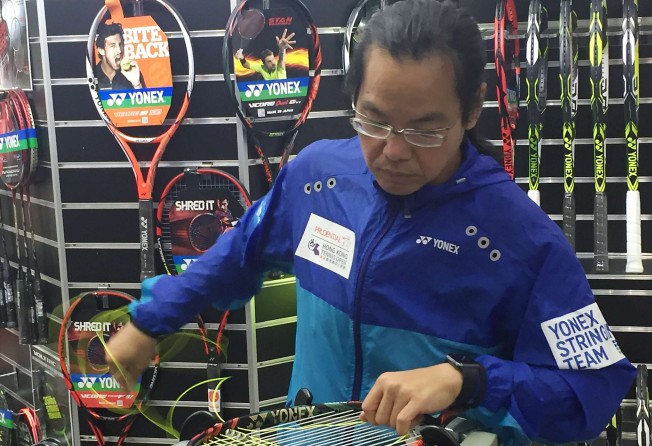
He holds his hands alongside one another. His right hand is slightly bigger than the other and gnarled with callouses erupting from the knuckles. His ragged finger tips look more like those of a bad barbed wire installer than a master craftsman.
“Look at my hands,” he sighs. “Can you see how they’re different?” As he turns them over side by side, you can’t help but notice the difference.
“An experienced stringer’s hands should look like this. It’s gone like that because I use my right one for weaving,” he says as he takes a large pair of scissors and nonchalantly trims away a large chunk of hardened flesh from the edge of his weaving hand.
Dickie Lee is a Hong Kong-based racquet technician or ‘stringer’ - the most experienced in Greater China he delights in reminding me. And his hands are all the proof you need of that.

He has strung racquets for the world’s best tennis players at 23 grand slam tournaments since his first job at the Hong Kong Champions Challenge in 1999.
He has worked at numerous WTA and ATP events across the world during his long career and has serviced players at the Olympic Games.
He also counts several top players and their coaches among his friends. Although a top racquet stringer can be a highly valuable asset to a player and it does no harm to stay on their good side.
“Everybody thinks of [Jelena] Jankovic as being irritable. But to me she’s always been very nice,” says Lee.
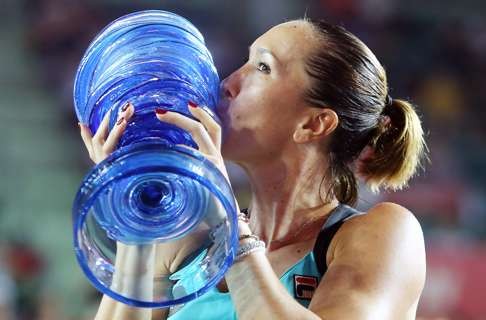
The reigning Prudential Hong Kong Open champion is one of many top players who values highly the marginal advantages a good stringer can provide.
“I’ve worked closely with Jankovic for years,” says Lee. “She is one of the more demanding players when it comes to her racquets. She’s very sensitive and can feel if the racquet is even a tiny bit off. She says, ‘Hey, Dickie. Please, tomorrow is very important. I don’t want to lose any of the tension.”
But why does the stringing of the racquet matter if you’re a top player? Lee is affronted by the question and insists on a demonstration.
The work of a racquet technician is vital to most players.
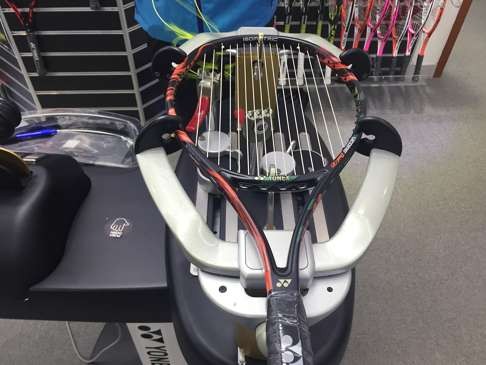
“From the moment a freshly stringed racquet is lifted out of the vice - from that very second, the tension of the strings is dropping,” says Lee looking at me as his hands weave and thread effortlessly across and back along the racquet clamped in his stringing machine.
As the tension in a racquet’s strings drops throughout a match, Lee explains, the power generated and the control of a player’s shots are affected. Each player has their own preference on tension. Some prefer the power generated by a lower tension at the expense of the precision afforded by more taut stringing.
“It’s like Formula One,” he explains. “My job is like the pit team. They talk about the pressure, we talk about the tension. If it’s tighter, you can slip and slide a little bit. If it’s soft, you can whip it more. If the player wants higher tension, they want more precision. If they want lower, they want it like a trampoline for extra power. Less tension is more power, and more tension is more control.”
Some players, however, value the importance of good stringing higher than others, like 16-time grand slam doubles champions Bob and Mike Bryan of the United States.
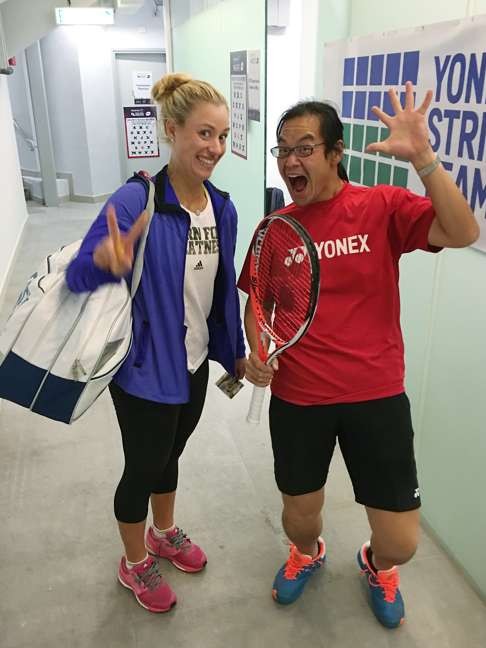
“A stringing machine will apply a whole number like 49 pounds of pressure or 50. The Bryan brothers will insist on 49 and a quarter pounds. So specific, but you can’t even feel that!,” says Lee.
“Every single day of a tournament the first customers will be the Bryan brothers. Their coach will come at 8am and say, ‘Bob and Mike want all their racquets strung by 8.45.’ They always want their racquets freshly strung in the morning. Their coach will come and ask, ‘Can you do the tension at 47 and 49?’ And then when we start he’ll come back. ‘Did you start? Well now they want 46.5 and 48.5!’”
But not all players are quite so particular about how they want their racquets prepared.
“Rafa Nadal does not care! No matter what tournament, not matter who’s string his tennis racquet, he only wants one tension - 55 pounds. That’s it. Never changes. No matter if the machine is no good or the stringer is inexperienced, he never changes,” says Lee.
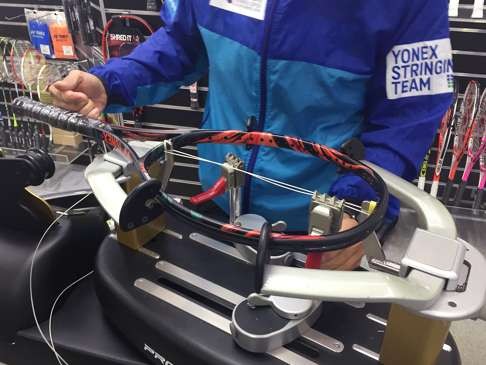
“For all grand slams he just needs maybe four or five racquets for the whole tournament. He would bring four racquets, give you two and tell you, ‘I’m going to play now, when I start the first game please string that racquet for me.’ And after the first set he will send for another racquet. And then after second set he wants a third racquet. Not demanding, but he wants them very freshly stringed.
“Even as world number one, he would come and talk to you directly very politely. He would come himself - not send his coach or assistant. Even if the stringer made a mistake, he would say, ‘Okay, I will try with it.”
The emergence of bespoke teams of racquet technicians contracted to work at major competitions means that Lee’s days as a leading stringer, who gets to practice his craft all over the world, could be numbered.
He still takes immense pride in what he does, though, and what he has achieved in his career, and he loves returning to work in his home city.
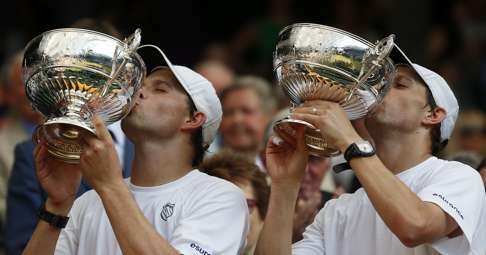
“Hong Kong is my favourite tournament,” he says rubbing his hands. “I’ve told everyone across the world. Hong Kong is small - the stringing booth is very small - but it’s very exciting for me because I grew up here and I practiced in Victoria Park when I was growing up.
“I was born here, but nobody knew me. Then after a couple of years, I got a name for myself because of my craft and then came back. I want to do something for Hong Kong tennis. I want to introduce more about what I do.”
Later, during the demonstration of his work, Lee explains more about the importance of his craft.
“This is not mysterious,” he says effortlessly whirring his hands across his stringing machine plucking and pulling like a musician.
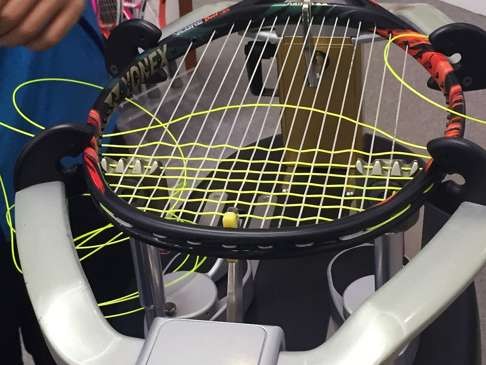
“This is very scientific. All the time people ask ‘why does it matter?’ But it’s very important. Players pay a lot of money to hire a tennis coach, but they have no concept of the importance of the stringing. I constantly have to tell people that stringing is important.”
I have one more question for him: does he feel resentful when he sees players destroying the fruits of his labour during an on-court bout of rage?
“Not at all. I don’t take it personally,” he says. “There’s a famous ITF text book which says players need to release their emotions. When a player smashes a racquet to pieces, it’s not because the stringer has done a bad job - well, sometimes maybe, but mostly it’s because they want a release. If they dont release that anger they can lose control. The smashed racquet means the tension is gone.”
How could Lee possibly resent that when he has made a career out of helping tennis players hone their tension?